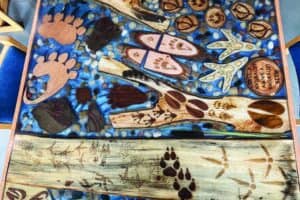On Sept. 28, the Colorado Department of Transportation held its third and final public meeting at Meridian Point Church in Falcon, Colorado; and presented information about the U.S. Highway 24 Planning and Environmental Linkages Study it conducted on Highway 24 between Powers Boulevard in Colorado Springs and the town of Ramah.According to the CDOT presentation, ìPEL is a study process that is typically used to identify transportation issues, priorities and environmental concerns Ö the goal of PEL studies is to gather enough detail so that the information developed can be utilized in future planning or National Environmental Policy Act processes.îMore than 30 members of the community attended the meeting and had an opportunity to comment in writing or verbally on the information presented. Project personnel were also available to answer questions.Stacy Tschuor, vice president of the transportation business unit for David Evans and Associates Inc., said project personnel wanted to get the publicís input before finalizing the study recommendations. She presented the recommended system management elements like a Park-n-Ride in Calhan and enhanced intersection/destination signage; and technology elements like enhanced signal detection to allow for fine-tuning of signal operations throughout the day.ìWe are also proposing some changes to the existing access control plan in several locations,î Tschuor said.According to CDOTís presentation, ìIn January 2005, CDOT, El Paso County and the city of Colorado Springs created the U.S. 24 Access Control Plan, which regulates access to U.S. 24 between Peterson Boulevard and Elbert Highway. It was officially approved on June 1, 2006.îTschuor said construction on any of the major recommended projects like lane reassignment is still a long way off, considering there is an almost $25 billion funding gap between CDOTís revenue and the price tag of all the needs identified in the PEL. However, having completed the PEL allows CDOT to compete for federal funding for certain projects, she said.Andrew Stecklein, CDOT project manager, said there is funding for a few follow-up tasks, mainly to the access points along the highway. ìAccess was considered one of the most critical elements to the highway with regard to public comments so far,î he said. Additionally, CDOT plans to take steps to further the process of finalizing significant recommended changes, such as communicating with the landowner near Judge Orr Road, which is an area of major concern, Stecklein said.ìThe big picture is that we are trying to create a master plan for that entire corridor that is fully integrated with all regional plans,î he said. ìRight now, El Paso County and CDOT are sort of in reactionary mode where, when there is a need for something like a safety or congestion concern, we are just reacting to it. That limits our funding options. It is easier to fund projects that are already part of a master plan.îCertain projects, such as adding passing lanes or revising inefficient intersections are at a minimum of two years out for construction, Stecklein said. However, a project plan for a passing lane on the west side of Peyton between it and Falcon is currently funded for design, but is not part of the PEL study, he said. That project is likely to be under construction within the next two years, he said.ìOverall, the PEL study has been a success, and we have had a very solid turnout from the public at all of the meetings,î Stecklein said. ìThat success is largely dependent on feedback from people that attend those meetings.îFor additional information about the project or to submit a comment, visit the projectís website at http://codot.gov/projects/us-24-pel-study.






